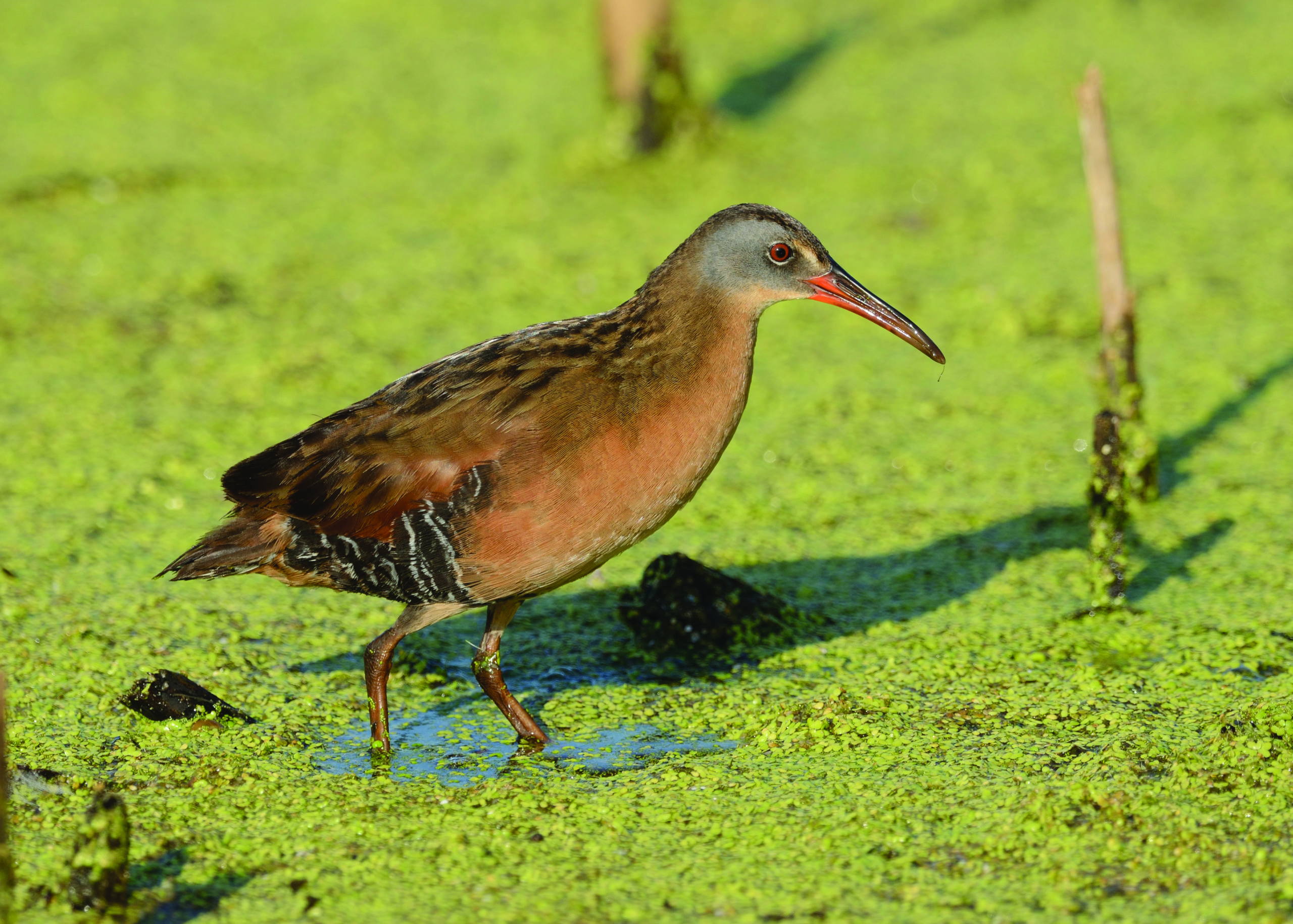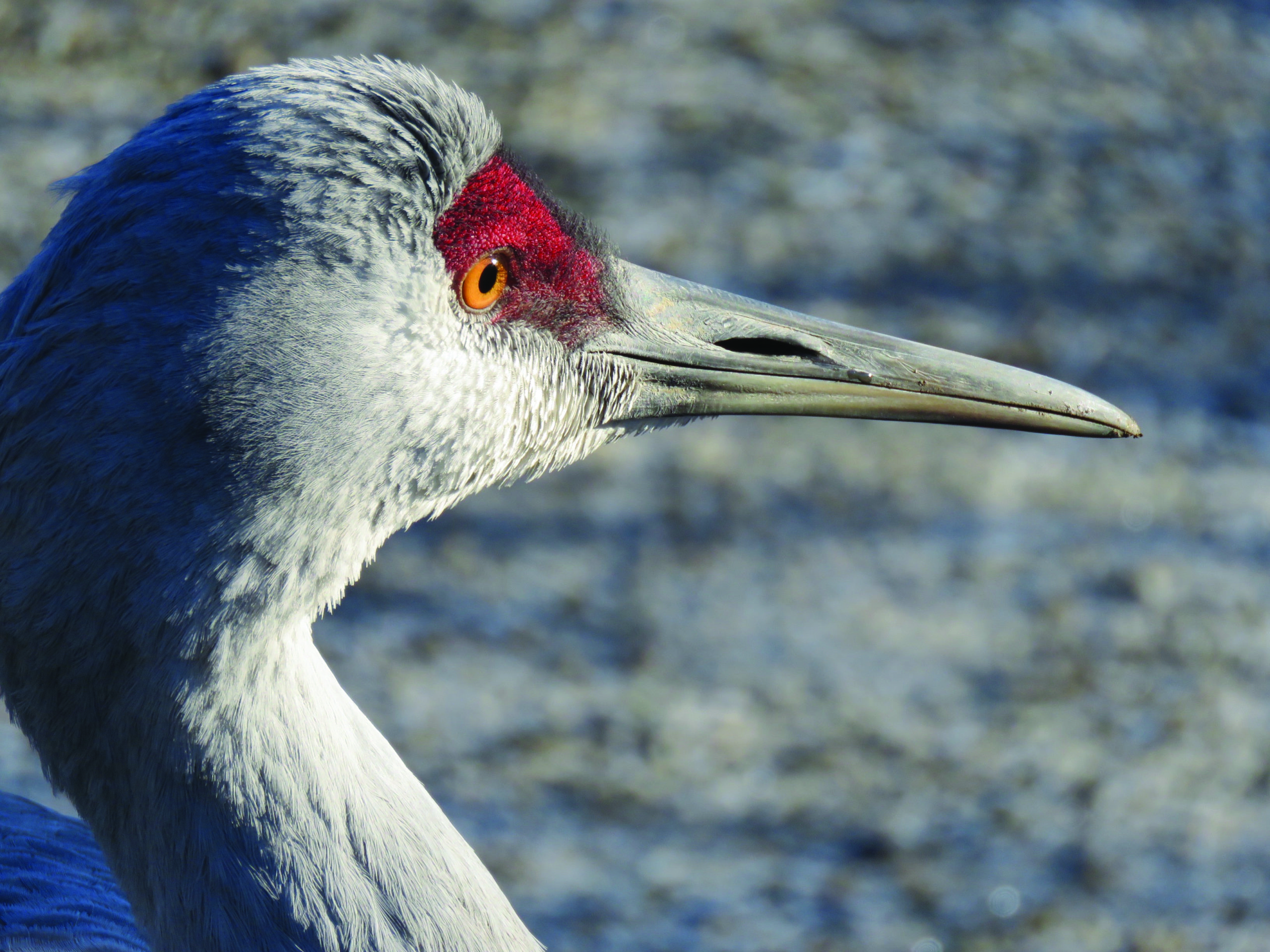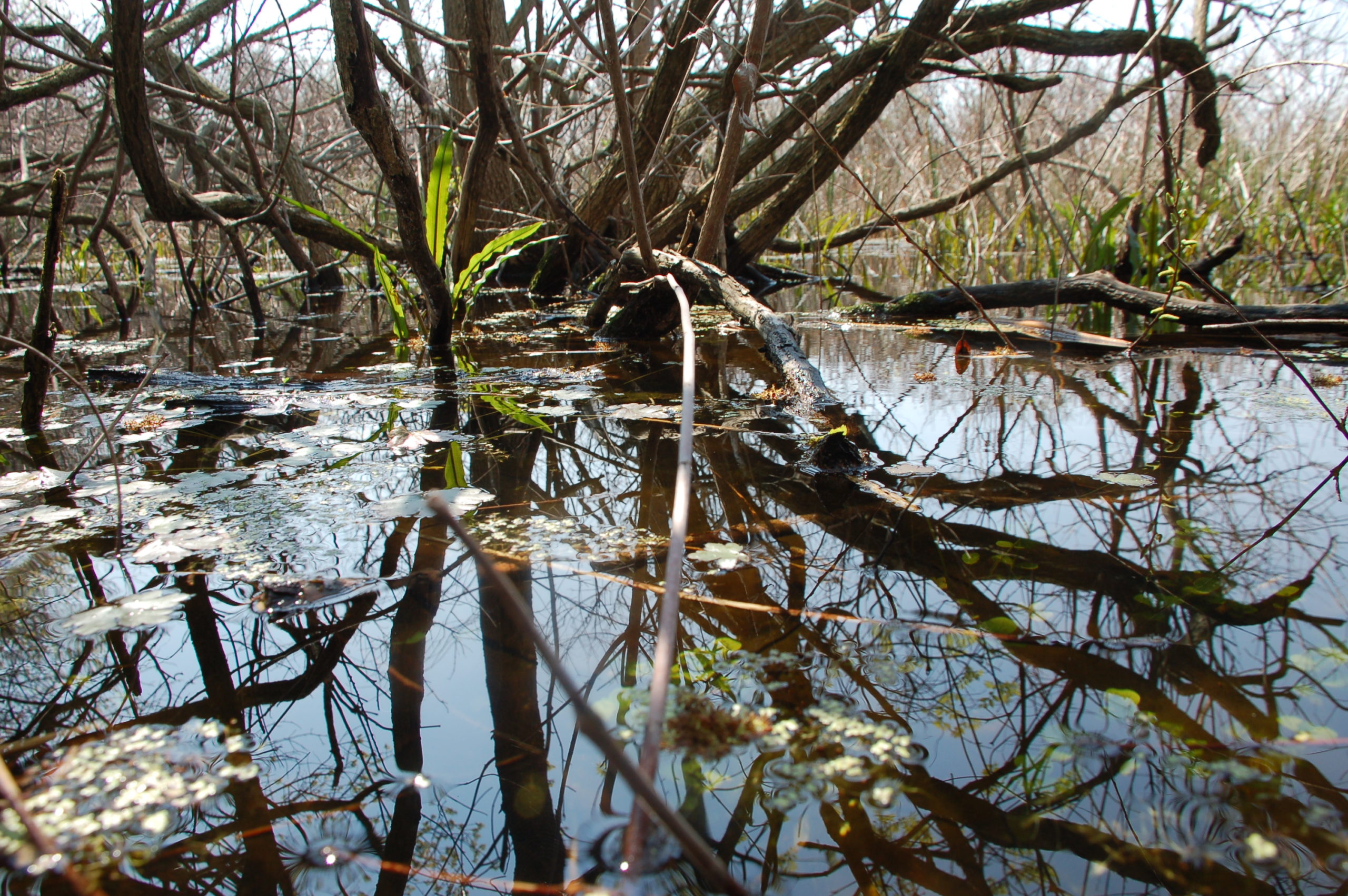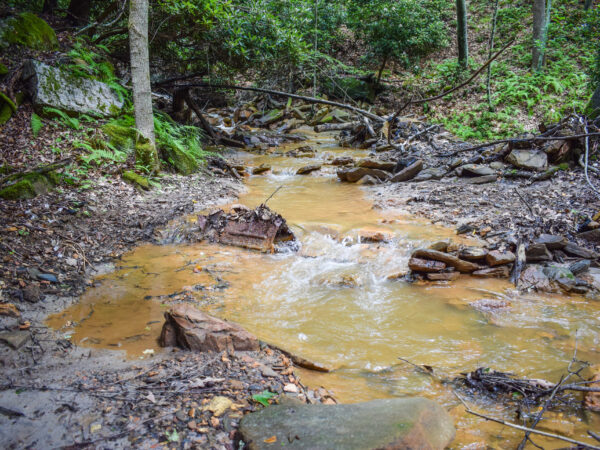
There’s a bird emergency in the Great Lakes region, according to the National Audubon Society, but the nonprofit bird conservation organization is hoping to change that.
“This really is a bird emergency,” said Nat Miller, Audubon Great Lakes’ director of conservation. “We don’t think that’s hyperbole. As often is the case, birds currently serve as an indicator for larger environmental problems and today they’re telling us it’s a critical time now to act to save the wildlife, water and way of life in the Great Lakes region.”
In an effort to reduce this alarming trend, scientists and conservationists with The National Audubon Society recently released a wide-ranging and comprehensive blueprint to address climate change, pollution and other detrimental man-made effects on Great Lakes wetlands and coastal areas – and their bird populations. The sweeping plan, Restoring the Great Lakes for Birds and People, targets more than a dozen bird species in 42 major projects from Lake Superior to Lake Ontario, with some projects already underway or completed.
According to Miller, in the last 50 years, North America has lost more than a quarter of its bird population, citing a study published by the journal Science in 2019. He said that since 1970, about 2.9 billion breeding adult birds have been lost, including both rare and common species.
“The disappearance among common species is an indication that our ecosystems are shifting in a bad way,” he said. “Some good news out of this report is that some waterbirds, waterfowl in particular, ducks, have seen population gains due in large part to political action like the Clean Water Act of the early ‘70s.”
The NAS’ data-driven plan assimilates resources from dozens of universities, private conservation entities, Native American tribes and government agencies in an effort to present a comprehensive snapshot the peril Great Lakes bird populations, and the marshes and wetlands where they live and breed, face.

The Virginia rail is one of the marsh birds targeted. At one post-restoration site where none were found in 2015-2016, they were found during the following three years. (Provided by National Audubon Society)
Many species in Great Lakes affected by climate change, other factors
With grassland birds, over half the population has been lost, and some of these species, like meadowlarks, are three-quarters gone. Birds that used to be commonly seen in fields are now decimated in populations. Miller said half the Baltimore orioles have disappeared. Bobolinks and common loons are among those birds disappearing.
“Aerial insectivores, we know that insect populations are declining and so are birds that depend on them,” he said. “Thirty-two percent of aerial insectivores, like barn swallows, are gone since the ‘70s.”
Audubon’s climate science team looked at North America’s 604 species and found that 389 are in peril. Scientists found that many of those birds could lose up to 100%of their climatic suitability if current trends continue in global warming.
“The good news is that if we take action now, there’s still time,” Miller said.
The master plan’s four tenets? Target science-driven goals, implement on-the-ground restoration, share results and engage with people and communities and secure sound policies and funding.
Audubon scientists have identified a dozen regions in the Great Lakes that are crucial bird habitats and desperately need attention. Within those regions, 42 projects encompassing almost 300,000 acres are on tap, in progress or already completed.

The Sandhill crane is a crowd-pleasing species that benefits from the National Audubon Society’s Great Lakes master plan. (Provided by National Audubon Society)
“We’ve already gotten started on some of this work, and where we’ve started, we’re already seeing successes,” Miller said. “The birds are telling us we’re in the right place and doing the right work.”
Focus on wetlands health include the standards: invasive plant control, introduction of native species, cutting and clearing of vegetation including controlled burns, water level management and natural drivers.
Natural drivers is not a term heard often in general news about wetlands, but Audubon scientists believe animals like beavers and muskrats, often considered pests in managed marshes, are actually beneficial. Beavers build dams and muskrats eat emergent vegetation, both of which help nesting birds by providing a mix of open water and vegetation.
Lakeshore marshes and Montezuma Wetlands Complex
One of those 12 priority regions is the 50,000-acre Montezuma Wetlands Complex in the Finger Lakes region of upstate New York, about 15 miles inland from Lake Ontario.
Within the region, 8,000 acres have been designated high-priority coastal wetlands. So far 1,200 acres have been restored directly by Audubon while 6,300 have been impacted through Audubon partnerships.
Chris Lajewski is director at the Montezuma Audubon Center, a site for education and outreach which engages a wide variety of people in the area from school-age field trips to retired volunteers.
“We do guided birdwatching tours, canoeing and kayaking trips, snowshoeing in the winter and a lot of environmental education programs,” he said. “Our role here is to connect people to this amazing wetlands complex and encourage people to act on behalf of birds whether that’s planting native species, removing invasive species or in some cases speaking out on behalf of birds, advocating for birds by voting certain ways for legislation.”
According to Lajewski, invasive species is a major threat that Audubon and its partners constantly work against.
“By that I mean water chestnut and hydrilla,” he explained. “Water chestnut is something we find here in our wetlands and waterways, and we’re fortunate to have an army of volunteers that helps us mechanically (in other words, by hand) remove it in order to prevent it from choking out everything else.”
When asked about which birds need help at Montezuma, Lajewski mentions the black duck and the cerulean warbler. And those are two of Audubon’s target species for restoration and preservation at Montezuma. The black duck utilizes its wetlands, and the warbler its forested areas.
Lajewski said Montezuma is no stranger to conservation success.
“We had the very first bald eagle reintroduction program on the continent,” he said. “We can proudly say we’ve gone from one pair of nesting eagles 50 years ago here in New York to over 400 pairs now in the state. We have 15 active nests here now, so we’re very confident that what the staff and volunteers are doing here at Montezuma will bring back those birds that are teetering and imperiled, such as the cerulean warbler and the wood thrush.”
Western Basin Lake Erie
In Lake Erie’s Western Basin, 62,000 acres are considered high-priority wetlands and adjacent habitat. Of that, 18,500 have been impacted in the last decade by conservation efforts including 6,000 restored directly by Audubon and 12,500 by Audubon partners like Ducks Unlimited, Black Swamp Bird Observatory, The Nature Conservancy and the Ohio Department of Natural Resources.

Wetlands like this, about a half-mile inland from Lake Erie in the Western Basin, are the focus of Audubon’s long-range Great Lakes restoration plan. (Photo by James Proffitt)
Miller described western Lake Erie as critical for migrating birds.
“Probably the most important area for migratory birds in the entire Great Lakes region is western Lake Erie, as birds cross over the lake in both spring and fall,” he said. “Tremendous potential here for a win-win for both birds and water quality.”
Scott Carpenter, director of public relations for Toledo Metroparks, said they’ve been working on marsh projects with their partners for some years and that things are going well.
“In 2018 we completed restoration of the 1,000-acre Howard Farms to marsh,” Carpenter said, “and this year we’re going to extend what’s now called Howard Marsh to the other side of the road. It was previously a row crops farm.”
The initial 18-month project was years in the making, he said, and included many partners to create and connect coastal land to Lake Erie and its tributaries.
“Funny thing: build a giant birdbath and the birds will come,” Carpenter said. “Before we opened a snowy owl was hanging out for a couple weeks, and the weekend we opened we had put up an osprey platform. I’ll be darned if a pair didn’t show up and start building a nest, just like we scripted it.”
Scudder Mackey, chief of Ohio’s Office of Coastal Management, said he’s been working with Audubon.
“I’ve been interacting with representatives from Great Lakes Audubon, talking about linking in with many of the states, including Ohio, on all types of projects. Our office is always looking to construct sites for water quality effects that have the potential to provide many of the habitat benefits that Audubon is really concerned about,” Mackey said. “Especially marsh breeding bird habitats. We definitely have an alignment.”
Mackey said projects currently planned and some under way in the Sandusky Bay region clearly work toward Audubon goals and H2Ohio goals. Ohio Gov. Mike DeWine’s H2Ohio program is an all-encompassing project to clean up Ohio waters – and improve wildlife habitat.
“We’re all trying to protect, restore and enhance our costal habitat and improve water quality,” he said.
St. Marys River and Straits of Mackinac
One of the high-priority areas with the largest acreage is at the intersection of the river, the Straits of Mackinac and Lake Superior. Dozens of individual sites on both the upper and lower peninsulas are included. About 150,000 acres have been identified as high-priority, with 45,000 acres impacted in the last decade. So far, 4,000 acres have been directly restored by Audubon, with another 41,000 through partners like the U.S. Fish and Wildlife Service and Michigan Department of Natural Resources.
Doug Fuller is president of the Petoskey Regional Audubon Society and said members of his chapter are actively engaged in citizen-science projects. The Audubon plan for this area emphasizes collection of data from conservation organizations like his.
“We don’t really have that many big marsh-type wetlands right here in our area, though we do have a couple Great Lakes coastal marshes up on the Straits of Mackinac and there are some big marsh areas associated with river mouths and some of our lakes have interesting birds like black terns and bitterns, which aren’t very common,” he said.
Just the kind of birds the Audubon plan wants to help.

The black-crowned night heron is one of the target species at Chicago’s Big Marsh Park. (Provided by National Audubon Society)
“We work pretty closely with our local land trust on projects,” Fuller said. “They’re really the ones who have the wherewithal to do wetlands protection. We partner with them to do species lists. Myself and some of the other birders went up with the staff into Pleasant View Swamp and came up with a pretty good list.”
That work at Pleasant View likely helped secure funding through the North American Wetlands Conservation Act. Lists from citizens, be it plants or birds, is just what scientists need, according to Audubon.
“Our members are mostly avid birdwatchers and so they really get into spending a day or a couple days trying to identify as many species as they can,” Fuller said. “I know they do keep track of all those lists, which we submit to Michigan Audubon and so they do use it in some science-based studies so they can identify trends and changes in bird populations due to climate change and other environmental factors.”
Audubon intent on creating change
“We’re a science-based organization. We know what we need to do and we know where to do it,” said Michelle Parker, Audubon Great Lakes executive director. “And because of that we have hope.”
Parker said the wingspan of Audubon in the Great Lakes region is huge, with active chapters in all eight Great Lakes states.
“We have 121 chapters with volunteers and advocates, almost 400,000 members,” she said. “These are people who have quite literally opted-in to our mission to protect and ensure the health of natural spaces for birds and people. We listen to birds, and the birds are telling us it’s time to act on behalf of the Great Lakes. It’s a vast, robust system, the largest freshwater ecosystem in the world and it’s struggling, and we know this because the birds are telling us so.”
Lajewski said, despite past conservation successes at Montezuma, the work is not done.
“You can’t walk away from conservation. If you stop doing the work that’s been going on for decades, we’re going to lose it,” he said. “Invasive species threats that have been going on for decades will continue and climate change won’t be going away, either. Audubon will continue to have a presence here at Montezuma and we’ll continue to work with our conservation partners to ensure that Lake Ontario and the entire watershed is a vibrant and healthy ecosystem.”
Catch more news on Great Lakes Now:
U.S., Canadian researchers conduct binational birds conservation research
Great Lakes Moment: Decline of bird species should serve as a warning
When a Dam Comes Down: Removal of dams allows fish passage and habitat restoration
API key not valid. Please pass a valid API key.Featured image: Muddy Creek Bay tributary Green Creek, in western Lake Erie, offers both woodlands and open water. The region is a hotbed for wetlands conservation and restoration projects. (Photo by James Proffitt)




